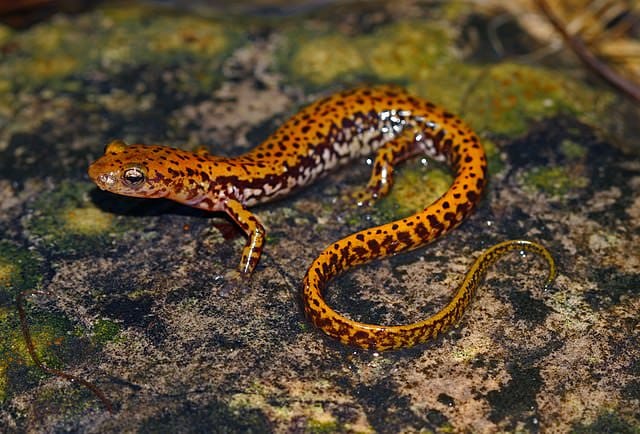15 Facts About the Long-tailed Salamander

The long-tailed salamander is an amphibian.
It can be found in southern New York, south to northern Alabama and west to Missouri in creek beds, caves, streams and ponds.
This salamander eats worms, spiders, mites, ticks, and millipedes.
Long-tailed salamanders can lose their tails, and re-grow them if a predator grabs them.
This creature is not in danger of becoming extinct; it is part of the the order urodela, in the class amphibia. Their conservation status is least concern.
Another name that it is known by is Salamandra longicauda.
This amphibian does not have any lungs, but breathes through its skin.
It has four toes on the front limbs, and five toes on its back limbs.
They have a projectile tongue, which means it shoots out of their mouths to catch prey.
They are eaten by snakes, lizards, rodents, birds, and bats.
The salamanders breed between late fall and early spring.
Eggs are mainly deposited in water, but can sometimes be found on land.
Adults are 4-6 inches long, orange or yellowish with a long tail.




